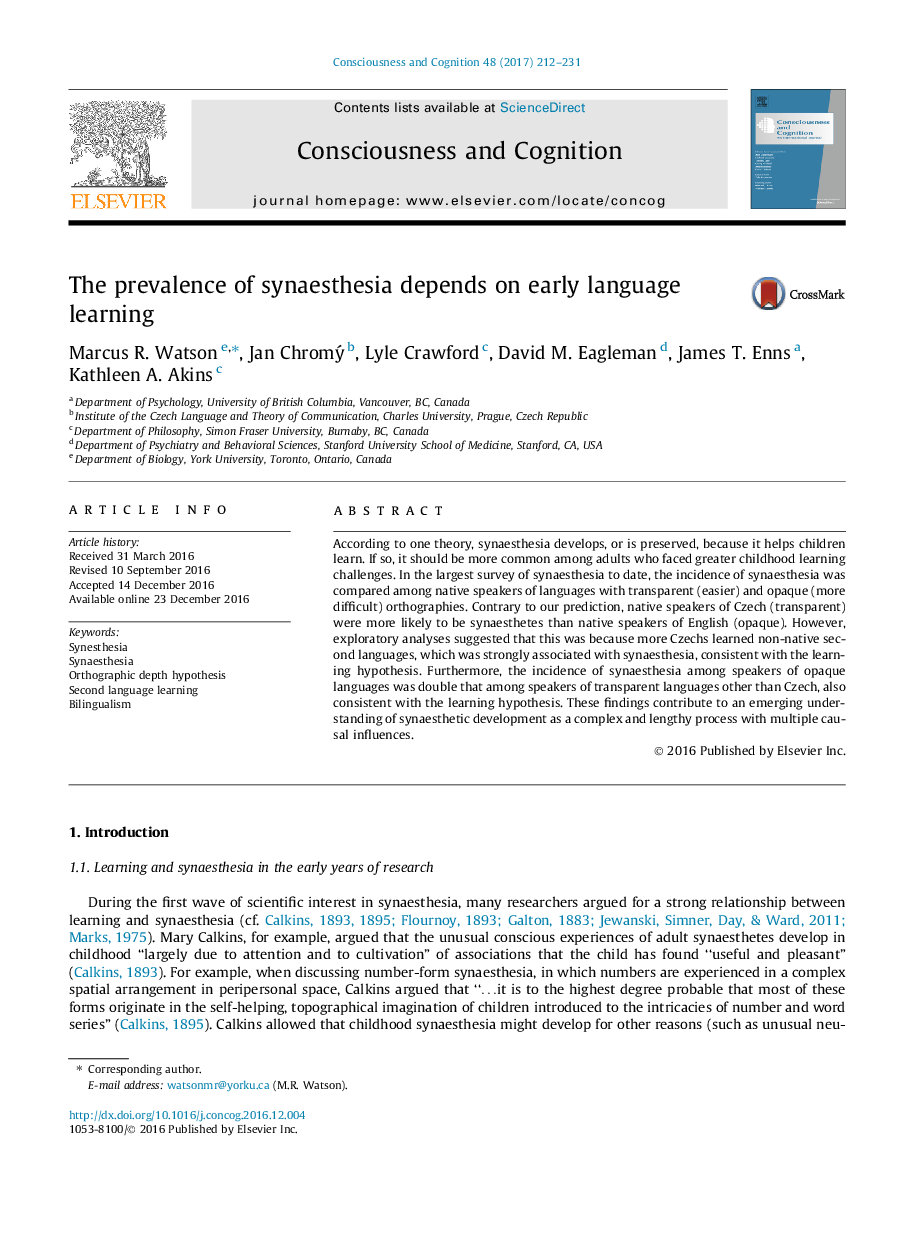| کد مقاله | کد نشریه | سال انتشار | مقاله انگلیسی | نسخه تمام متن |
|---|---|---|---|---|
| 5041907 | 1474163 | 2017 | 20 صفحه PDF | دانلود رایگان |
- Synaesthesia is more common among native multilinguals than native monolinguals.
- It is more common among speakers of languages with complex phoneme-grapheme mappings.
- It is less common among speakers of languages with simple phoneme-grapheme mappings.
- It is also common among speakers of Czech/Slovak, which have simple mappings.
- Women are more likely to comply with synaesthesia research protocols.
According to one theory, synaesthesia develops, or is preserved, because it helps children learn. If so, it should be more common among adults who faced greater childhood learning challenges. In the largest survey of synaesthesia to date, the incidence of synaesthesia was compared among native speakers of languages with transparent (easier) and opaque (more difficult) orthographies. Contrary to our prediction, native speakers of Czech (transparent) were more likely to be synaesthetes than native speakers of English (opaque). However, exploratory analyses suggested that this was because more Czechs learned non-native second languages, which was strongly associated with synaesthesia, consistent with the learning hypothesis. Furthermore, the incidence of synaesthesia among speakers of opaque languages was double that among speakers of transparent languages other than Czech, also consistent with the learning hypothesis. These findings contribute to an emerging understanding of synaesthetic development as a complex and lengthy process with multiple causal influences.
Journal: Consciousness and Cognition - Volume 48, February 2017, Pages 212-231
